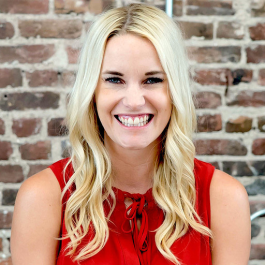Having a hard time developing your leadership style? One simple fix is reflecting on the ways previous managers helped you grow professionally — and also the ways they held you back.
That’s Kaleigh Sanchez’s advice. She’s the senior manager of client solutions at Flexport, and as she’s developed her own identity as a leader, she’s leaned on the attributes she’s liked and disliked from previous managers.
“When going through this exercise, I was surprised that although there were managers or leaders I didn’t necessarily agree with or enjoy working for, there were still traits and attributes about their leadership style that I appreciated and could tweak to fit my style,” Sanchez said.
Kanchan Bankar, a senior manager of software engineering at Verifi, has used this same exercise — but with one important caveat: Find a style that fits you.
“It is natural for new managers to follow popular leadership styles and strategies which have worked for others,” Bankar said. “The obvious problem is that those styles may not match your personality.”
The time is now to own your leadership style. That’s why Built In LA spoke with four women leaders to learn more about how they found ways to lead that were authentic to them, and the advice they have for future women leaders in tech.
How would you describe your leadership style?
I believe one of the most important things a leader can do is to build a strong team. There are only so many hours in the day, and effective delegation is absolutely critical to success. To that extent, empowering the team around me is an integral part of my leadership style. I’m fortunate to work with very talented individuals, and by supporting their professional and leadership growth, I’m better positioning our teams for success.
What experiences or lessons helped shape your leadership style throughout your career?
One factor is the passion I’ve seen in the colleagues and leaders I’ve worked for. Those who are passionate and enthusiastic about their subject matter invariably are the most successful. Especially working in technology fields, it’s critical that we have a constant sense of curiosity about our industry and a natural inclination to push the boundaries. I try to inspire this energy within my teams on every project we work on.
Avoid restricting yourself to a narrow definition of what you think a leadership style should entail.’’
What advice do you have for others who may be struggling to define or own their leadership style?
Your skills as a leader should be fluid and constantly evolving. As professionals, we continue to grow within our own roles and the roles we play on our teams. How I operate today is not the same as I did three, five or 10 years ago.
When starting out, one recommendation is to listen and learn from your team. One-on-one meetings, feedback cycles and office hours are great channels for open and transparent communication. Find out what your team needs from you in order to be successful, and then step into that function. Supporting your team’s success is your most important job as a leader.
What they do: Motional is an autonomous vehicle company based in Santa Monica.
How would you describe your leadership style?
My leadership style is built on a foundation of trust and empathy. It’s important to me that my team trusts that if they bring something to my attention, whether it was a mistake they made or an issue they are uncertain how to handle, they know I will be their teammate in resolving the situation. Once the problem is resolved, I then put myself in their shoes and build a corrective action plan (if needed) from a place of empathy.
Feedback is much better received when the person providing the feedback has considered all aspects of a situation before jumping to conclusions. Your team will be much more receptive to feedback when you’ve already cultivated a strong foundation of trust with them, as they know what you are saying comes from a good place.
What experiences or lessons helped shape your leadership style throughout your career?
My leadership style has been shaped by the many types of leaders and managers I’ve worked for throughout my career. I encourage everybody to reflect on what you liked and didn’t like about managers and leaders from your past when considering the type of leader you want to be. What did you like about some and not others? Who did you enjoy working for and what did they do to inspire you? These are questions I asked myself when building out my brand as a manager and leader.
Don’t force a style that doesn’t fit you or your personality, or you’ll just make yourself miserable trying to fake it.’’
What advice do you have for others who may be struggling to define or own their leadership style?
Build a leadership style that allows you to be yourself. Plus, those around you can tell when you aren’t being your true self. There are so many types of leaders in the world — quiet ones who lead from behind, loud ones who use their energy to hype everybody up, etc. You’re in a leadership position because somebody saw you as a leader based on your work ethic and ability to influence those around you in a positive way. Embrace that as you think about the leader you want to be and how you want to be perceived.
What they do: Flexport is a logistics company in Playa Vista that helps make global trade both easy and accessible to everyone.
How would you describe your leadership style?
My personal leadership style adapts with the circumstance. There are times when I am direct and prescriptive in my approach, and there are times when I take a backseat to enable my direct and indirect reports to exercise their leadership skills. Regardless of what leadership style I adopt for a given situation, I do my best to always show up, be an active empathetic listener and lead by example.
My leadership style is also informed by the culture that exists within the team and organization as a whole. A culture that encourages openness, innovation and collaboration gets us all on the same page from the start and ensures that we push forward as a team.
What experiences or lessons helped shape your leadership style throughout your career?
I started my career as an individual contributor. As an individual contributor, I sharpened my tactical decision-making, which I rely on daily for project delivery. As I took on a broader scope of responsibilities along with a leadership role, I picked up a new set of skills such as effective delegation, mentorship and strategic goal-setting.
A critical point for me was when I became responsible for the career development of a small group of engineers that had severe staffing challenges. I worked closely with my manager and the employment experience team to unpack the complexities of retention issues affecting the team. We developed a systemic approach to improve engagement by empowering existing team members to own distinctive portions of the business by having consistent career development conversations, as well as by hosting team-building events. We also revised our hiring practices to attract the right talent for the right challenge by hiring more junior engineers and building a talent development pipeline. As a result, we now have a highly effective technical team with an enviable longevity track.
Leadership is an ensemble of skills and practices that mature with time so don’t forget to invest in keeping them sharp.’’
What advice do you have for others who may be struggling to define or own their leadership style?
Don’t do it alone! Find a mentor or a few who inspire you and ask them for input. Seek connections with your peers within your organization and beyond. They will be your day-to-day support group.
Also, find ways to keep learning and improving. I’ve been fortunate to have consistent support from Edmunds.com’s employment experience team that offers annual leadership courses that focus on various aspects of the trade. If your company does not offer such forums, ask your mentors and peer network for training referrals that will help you in your leadership journey.
What they do: Edmunds.com is an American online resource for automotive inventory and information based in Santa Monica.
How would you describe your leadership style?
The most important task is to establish rapport with the team. Creating an open-door environment makes it easier for folks to ask questions and find solutions to problems. I also leverage people’s strengths by setting high expectations through regular one-on-ones. The bottom line is to ensure high morale across teams and facilitate efficient communication.
What experiences or lessons helped shape your leadership style throughout your career?
I am fortunate to have witnessed good managerial styles throughout my career, and more importantly, derived vital leadership principles along the way. For example, one of my managers always asked me questions and encouraged me to think independently, rather than providing ready-made solutions. This built my critical thinking abilities to solve emergent issues.
My own journey from a developer to a team lead and then to senior technical manager shows the importance of evolving your own style of leadership. Developers usually have strong opinions and there is a lot to learn via constructive feedback.
The key is continuing with the good practices and team-building exercises while waiting on anticipated cultural shifts.’’
What advice do you have for others who may be struggling to define or own their leadership style?
A successful managerial style may not work for a different context and team. Therefore, adaptability and versatility to match the precise situation is vital. The challenging part is holding your ground and being patient as the teammates adapt to the changes, which can take longer than expected.
What they do: Verifi provides e-commerce merchants with end-to-end payment protection and management solutions.












